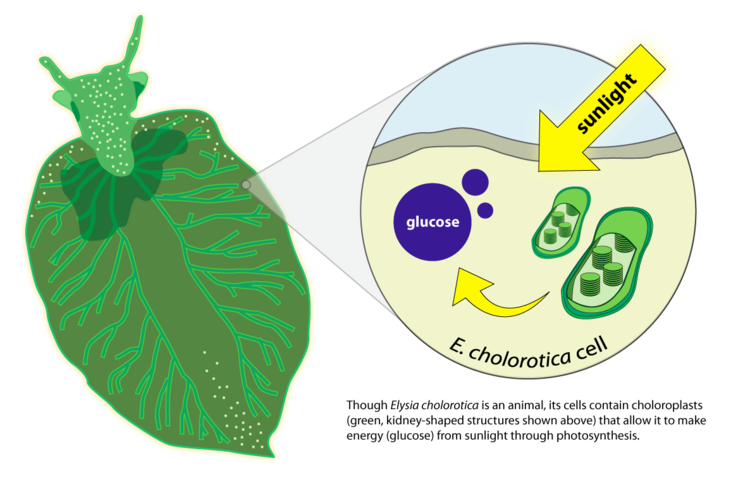
5 Easy Math Engagement Strategies for the Classroom
The news headlines are daunting. Math scores are down. School districts are scrambling to turn things around. And...
Science Explored | Published March 04, 2013
A full stomach with nothing to eat? Marine scientists have found an organism that can answer that question with a resounding “yes!” Discovered in 2008, Elysia cholorotica is a solar powered sea slug that resembles a snail without its shell. This solar slug roams the Eastern coast of the United States in the depths of the Atlantic Ocean. Dr. Mary Rumpho, a professor of biochemistry at Maine University’s School of Marine Sciences, discovered how this slug manages to feed without having to eat – the secret is stolen genes.
When we think of photosynthesis, most of us conjure up an image of a plant cell brimming with chloroplasts, a green colored cell structure designed to capture the sun’s energy. Plants are capable of harnessing the sun’s energy to create glucose, a sugar that other cell structures called mitochondria use to power all physical and mental behaviors. Though plant cells always contain chloroplasts, animal cells do not possess these structures, and animals must eat to gain glucose. When E. cholorotica hatches from an egg it initially eats a diet of algae, which, although we most often see as a green film on aquariums glass is one of the most widespread plants on the planet.

E. cholorotica spends the first two weeks of life munching on algae, which when digested turns into miniature power plants, producing energy that travels through the slug’s semi-translucent body when hit by sunlight. Still, Dr. Rumpho was puzzled. When humans eat plants, the chloroplasts inside of it will not start to work inside ourbodies. If that were true, after enjoying a few mixed green salads, we would never have to eat again, as chloroplasts would find their way into our cells and churn out energy when sunlight struck our skin.
The source of the problem is that chloroplasts cannot sustain themselves without the nucleus of the plant cell to which they belong. Chloroplasts have their own DNA – about 10% of it is within the chloroplast. The rest of it is inside the nucleus of the plant cell in which they reside. Because the algae cells are digested when the slug eats them, how could the chloroplasts still have access to the rest of their nucleus-bound DNA?
Dr. Rumpho and her team are still investigating how this is possible. They have hypothesized that through a process called kleptoplasty the slugs are able to add new segments of DNA to their own existing DNA. Essentially, the algae’s DNA that codes for making, maintaining, and using chloroplast is extracted in digestion and added to the slug’s animal DNA. Kleptoplasty would be an adaptation in and of itself – our DNA does not have any genes that allow incorporation of foreign DNA into it. The possibility also exists that this process is facilitated by some yet unidentified virus that can “snip” out those particular pieces of DNA (genes) – this is reasonable given that we use viruses to add new genes to crops like corn in order to change how the corn grows and functions. Regardless, it appears that the ability to use chloroplasts inside of the slug’s cells is passed from parent to offspring, making it an inherited trait rather an than acquired one.
It is unlikely that humans will be able to enjoy the benefits of chloroplasts anytime soon. DNA does not often jump from one species to another. Still, there are a few cases where gene jumping has occurred outside of E. cholorotica. The problem with migrating DNA from one species to another is that almost always, the foreign DNA does not perform the function in its host species, but rather becomes garbled genetic code that does nothing. This makes E. cholorotica unique – its adaptation not only confers upon it an impressive ability but also seems to have occurred by mysterious means.
TEKS: 3.10AB, 4.10AB, 5.10AB, 7.12D, B.4C, B.6AB, B.9B

The news headlines are daunting. Math scores are down. School districts are scrambling to turn things around. And...

Math assessment in California is changing. What used to be a compliance exercise or reporting tool is now becoming a...

You know the moment: a student’s eyes light up when the science experiment fizzes or the math puzzle helps them...